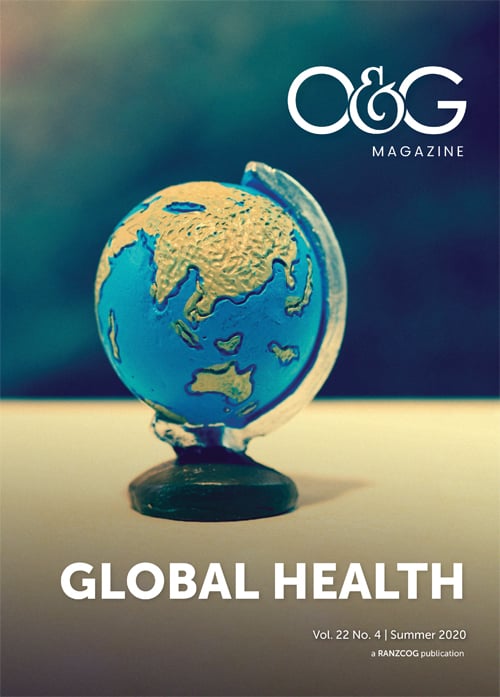I teach a course called Practical Ethics at Princeton University. I include, as part of the coursework, readings on global poverty containing estimates of how much it costs to save the life of one of the millions of children who die each year from diseases that we can easily prevent or cure. In 2009, a student, Matt Wage, used such an estimate to calculate how much good he could do for others in his lifetime. Wage was planning to become a professor, and used a ballpark figure on the average income he was likely to earn each year and the assumption that he would donate 10 percent of it to a highly effective non-profit. He discovered that he could save about one hundred lives. He thought to himself, ‘Suppose you see a burning building, and you run through the flames and kick a door open and let one hundred people out. That would be the greatest moment in your life. And I could do as much good as that!’
Wage did not become a professor. Instead he set himself on a path to saving a hundred lives, not over his entire career, but within the first year or two of his working life and every year thereafter. In the years up to his graduation, Wage had done a lot of thinking about what career would do the most good. Over many discussions with others, he decided to take a job on Wall Street. On a higher income, he would be able to give much more, both as a percentage and in dollars, than 10 percent of a professor’s income. One year after graduating, Wage was donating a six-figure sum – roughly half his annual earnings – to highly effective charities.
Wage is part of an exciting new movement: effective altruism. The definition of effective altruism that appears in Wikipedia is: ‘a philosophy and social movement which applies evidence and reason to determining the most effective ways to improve the world.’ Effective altruism is based on a very simple idea: we should do the most good we can. Obeying the usual rules about not stealing, cheating, hurting and killing is not enough, or at least not enough for those of us who have the good fortune to live in material comfort, who can feed, house, and clothe ourselves and our families and still have money or time to spare. Living a minimally acceptable ethical life involves using a substantial part of our spare resources to make the world a better place. Living a fully ethical life involves doing the most good we can. According to Wage, counter-intuitively, he could do the most good on Wall Street.
O&G specialists may not make as much money as high-fliers on Wall Street, but they also avoid the kind of unethical practices that were revealed only too clearly as a result of the global financial crisis of 2008–9. Most still earn enough to make substantial charitable donations and still live very comfortably. As Wage’s example illustrates, we should not think of effective altruism as requiring self-sacrifice, in the sense of something necessarily contrary to one’s own interests. If doing the most you can for others means that you are also flourishing, then that is the best possible outcome for everyone. As O&G specialists fulfil their duty to save and improve lives at work, the ideas of effective altruism can help them do the most good through their charity choices as well.
Doing the most good is, admittedly, a broad idea that raises many questions. Here are a few of the more obvious ones, and some preliminary answers.
What counts as ‘the most good’?
Effective altruists will not all give the same answer to this question, but they do share some values. They would all agree that a world with less suffering and more happiness in it is, other things being equal, better than one with more suffering and less happiness. Most would say that a world in which people live longer is, other things being equal, better than one in which people have shorter lives. These values explain why helping people in extreme poverty is a popular cause among effective altruists. A given sum of money does much more to reduce suffering and save lives if we use it to assist people living in extreme poverty in developing countries than it would if we gave it to most other charitable causes.
How do effective altruists decide where their donations will do the most good?
Effective giving is both an art and a science in which the heart and the head work in synergy to make giving decisions. Yet data indicates that in the USA, only 38% of donors research non-profits before making giving decisions, and only 9% of donors compare different non–profits, so most of us are giving from the heart alone. We often base our giving decisions on emotions, such as if a friend or family asks us to support a cause or if a loved one has suffered from a disease or if a local organisation asks us to support members in our community. While it cannot be denied that a personal emotional connection to giving is imperative, truly making an impact requires us to base our giving decisions on an objective analysis of what works, and what does the most good per dollar donated.
The quality and availability of research on the effectiveness of individual charities has risen dramatically over the past few years, largely due to the existence of GiveWell, a research organisation set up in 2007 precisely to fill the vacuum that existed previously. The outcome of this research is freely available online. Other organisations, such as The Life You Can Save (which I founded after the publication of a book with that title) draw on GiveWell’s research but broaden the criteria for recommending a charity. Choosing between different causes (for example, global poverty, reducing animal suffering, protecting the environment, reducing risks of human extinction) is the subject of vigorous discussion on websites associated with effective altruism.
Why is it important to evaluate the effectiveness of charities? Is it not sufficient to know that a charity is ‘not a fraud’?
It is important to identify what different organisations actually achieve for each dollar they receive. This is because some charities provide hundreds or even thousands of times greater impact per dollar than others – and when I say this, I am not comparing a fraudulent charity with a genuine charity, but comparing one genuine charity with another genuine charity.
Consider this example: It costs about $50,000 USD to train a guide dog that will help a blind person in the United States – a very good cause. However, for much less than $50,000, you can help prevent people from becoming blind because of trachoma, which is the most common cause of preventable blindness globally, and you can help restore sight to people who are blind because of operable cataracts. The cost for preventing blindness from trachoma has been estimated to be around $7.14, and trachoma can also be treated by surgery for an estimated cost of $27–$50. Similarly, older people who become blind because they have developed cataracts can restore their sight through a simple surgery costing as little as $50. In other words, for the cost of placing one guide dog with one blind person, you could instead donate to an organisation like Seva or the Fred Hollows Foundation and provide surgery to restore sight to at least 1000 people who cannot see, or prevent a similar number of cases of blindness from trachoma.
Effective giving requires you to grapple with the question of where your donation could do the most good, and to give to areas where you could maximize your impact, as not all charities are created equal.
Can you give some examples of what effective non-profits accomplish through donations?
There is still a lot of work to be done in evaluating the effectiveness of various programs. However, giving to an effective non-profit can ensure that even a small donation does a lot of good. If you are considering donating to a charity recommended by The Life You Can Save, you can use the organisation’s Impact Calculator to show what the amount you donate will achieve. Based on current estimates, a $50 donation could:
- Deliver treatments through the Schistosomiasis Control Initiative or Evidence Action’s Deworm the World program to protect an estimated 100 or more children from parasitic worm infections, preventing life-threatening conditions including bladder cancer, kidney malfunction, spleen damage, and anaemia.
- Deliver, through the Global Alliance for Improved Nutrition or the Iodine Global Network, a year of iodised salt for an estimated 500 people, improving health and protecting against iodine deficiency disorders such as brain damage.
- By means of Evidence Action’s Dispensers for Safe Water program, provide safe drinking water to an estimated 40 community members for one year.
- Take care of the annual costs of high-quality healthcare for two patients in remote Nepal offered by Possible, including home visits and surgery, with no fee-for-service at the point of care.
- Enable One Acre Fund to supply a farm family of six with inputs such as seeds, fertiliser, training, and market access support, to increase production and profits by an average of 50% in a single season.
Why act altruistically?
For some people, the reason for helping others is obvious: it is what we ought to do, and part of living an ethical life, and there is no need for saying anything more. But some are more sceptical. They want to know what they will get out of it. Fortunately, recent research in psychology has justified an ancient philosophical response to that question, one that is as old as Socrates: living ethically is a better way of living for us too. Helping others, living in accordance with our most fundamental values, and being generous, is a way of giving meaning to our own lives and finding fulfilment in what we do. Effective altruists directly benefit others, but indirectly they often benefit themselves.
I thank Anam Vadgama for research and editorial assistance with this article.
Peter Singer is professor of bioethics at Princeton University. His books include Practical Ethics, Rethinking Life and Death, The Life You Can Save and The Most Good You Can Do. He founded The Life You Can Save, a non-profit organisation that exists to promote the most effective charities helping people in extreme poverty. An updated edition of the book that gave its name to the organisation can be downloaded, free, as an eBook or audiobook from www.thelifeyoucansave.org.






Leave a Reply